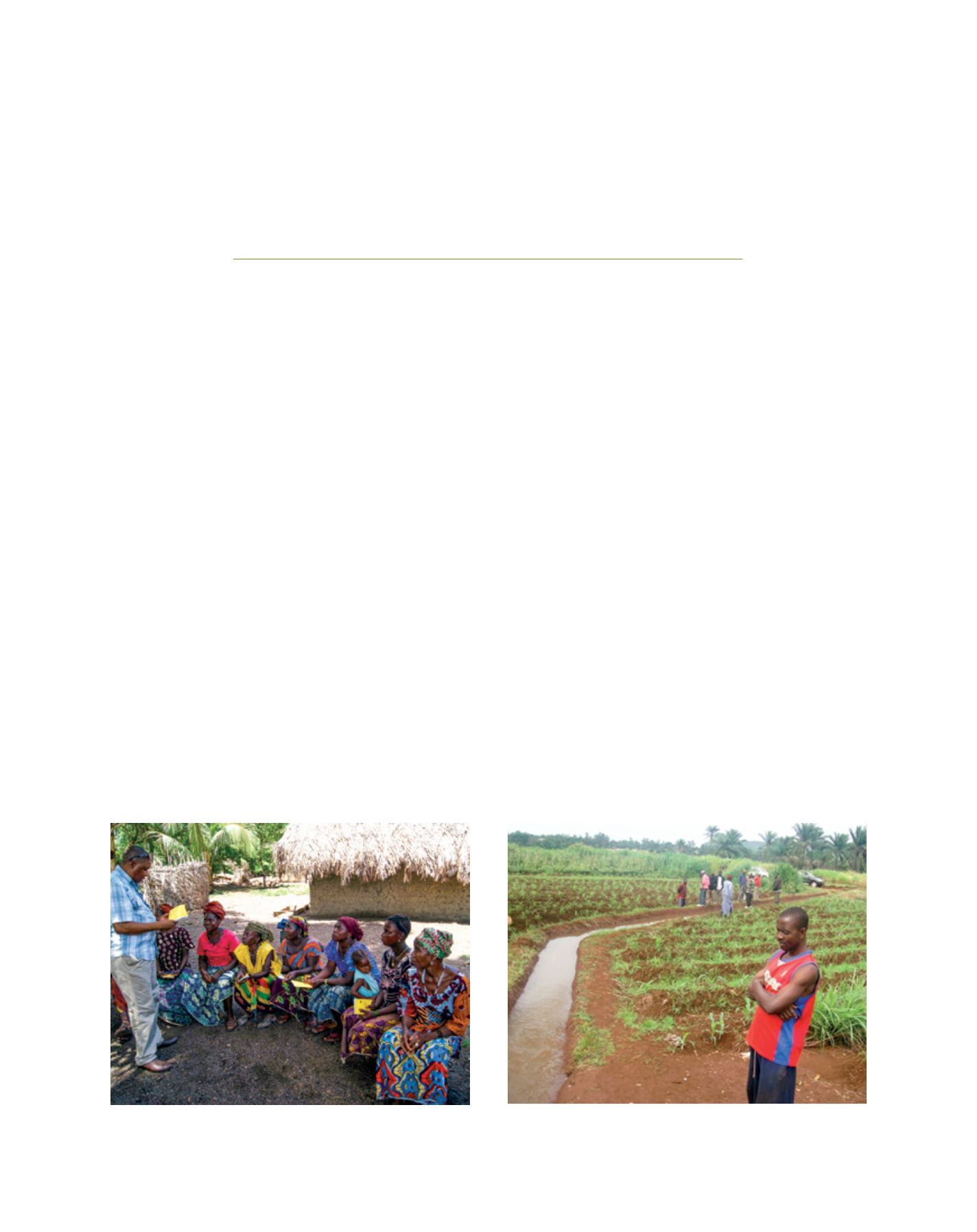

[
] 22
Sustainable smallholder agriculture,
food security, agricultural policy and
the role of smallholder farmers
Umar I. Kamarah, Islamic Development Bank Group
I
ncreasing prices for agricultural commodities offer a
historic opportunity to intensify production systems for
small-scale farmers in many developing countries. But
without agricultural policies supporting them in making use
of this opportunity, many of them would lose their access
to land and income, resulting in aggravated food insecurity.
Hence, an agricultural policy guided by the objectives of
food security, poverty reduction and sustainability, taking
into account the dynamics of rural growth, must ensure:
increased supply of agricultural products (including, but
not exclusively, food) based on intensification; broad-based
income/livelihood opportunities for the rural population;
environmentally friendly, sustainable land use.
There is some debate over what a ‘development and food
security oriented’ agricultural policy actually means. Should
it focus on the potentials of existing smallholder farms, or on
the efficiency of commercial scale large-scale farms? Should it
embark on high external input technology based on chemicals
and fuel, or give preference to sustainable land use practices?
Should it go for a ‘food first’ policy, or should all agricultural
commodities receive the same attention? Should smallholder
farmers be promoted by public or private services? Moreover,
there is disagreement on the appropriate approaches of
promotion: are smallholder farmers helped most effectively
by a farming/livelihood systems approach or a value-chain
approach? And there is debate about who is responsible for
ensuring sustainable and climate-smart land use practices and
adaptation of farmers to climate change. However, the over-
arching question is whether there are general global answers
to these questions or whether the answers depend on the
specific local context. The answers to these questions must
be guided by the policy objectives above.
1
Although some of the dynamics are of global nature and demand
global answers, specific local conditions have to be considered to
find appropriate policy responses.
2
Consequently, there cannot
be any general rule on whether small or large farms, low or high
external input solutions, or private business, civil society or the
government will do better. Rather than embarking on dogmatic
debates onwhat is preferable in general, the first rule for designing
agricultural policies is to follow the principle of context specific-
ity. This principle has far-reaching implications for the process of
policy design. Policies need to be drafted on the basis of local-level
analysis and experience and with the participation of people with
local knowledge. Such a process has to be adequately resourced.
3
Smallholder farmers (SFs), given the opportunity, can inten-
sify their production methods and thus increase productivity
considerably. Especially in low-wage countries, SFs dispose of
Image: IDB
Image: IDB
Watershed management and environmentally-sound water-harvesting help to
improve food security and conserve the natural resource base in Mont Bpabit
Gender empowerment is smart economics: Sierra Leone’s SAGs play a vital
role in enhancing economic efficiency and improving development outcomes
L
iving
L
and
















